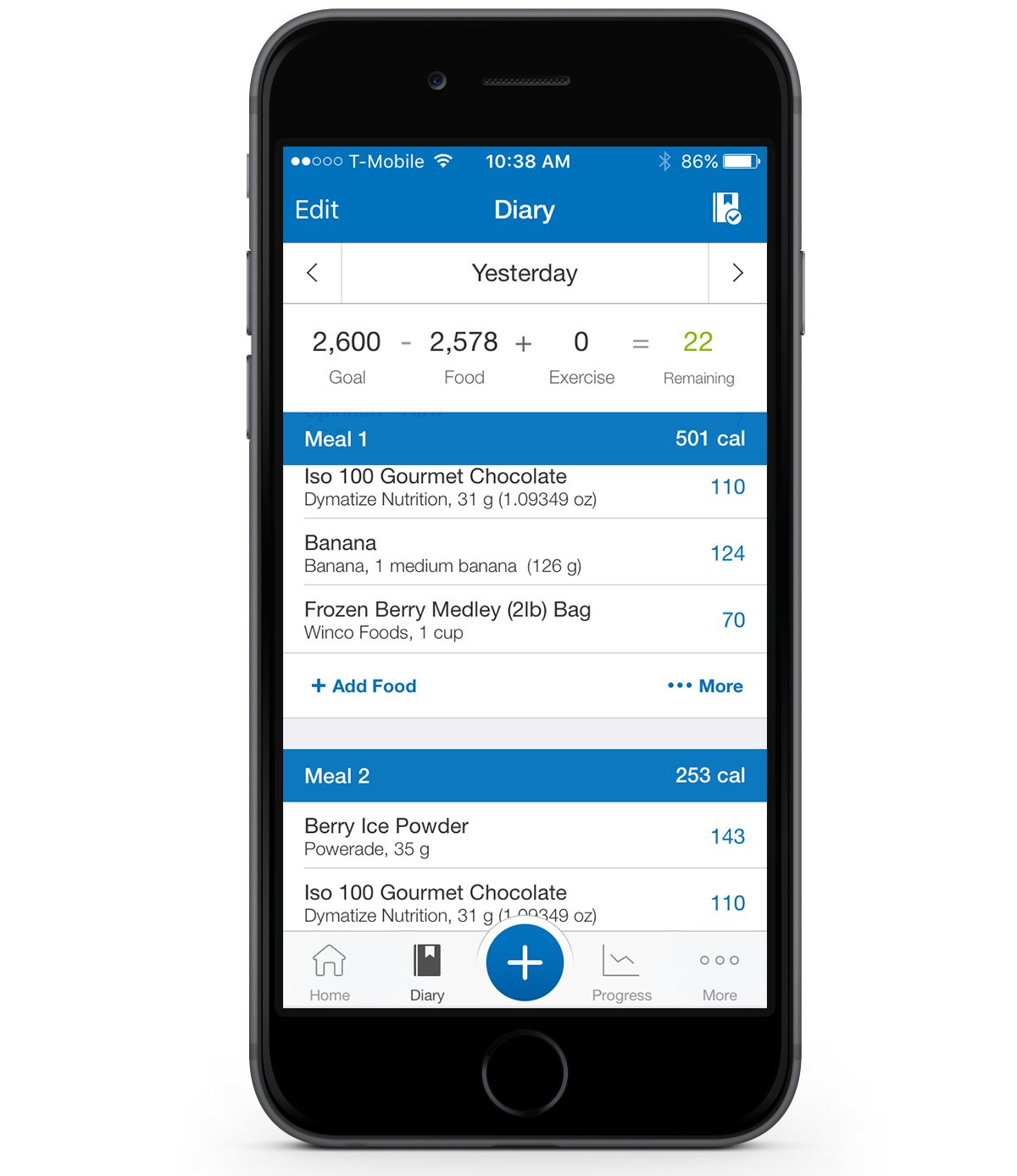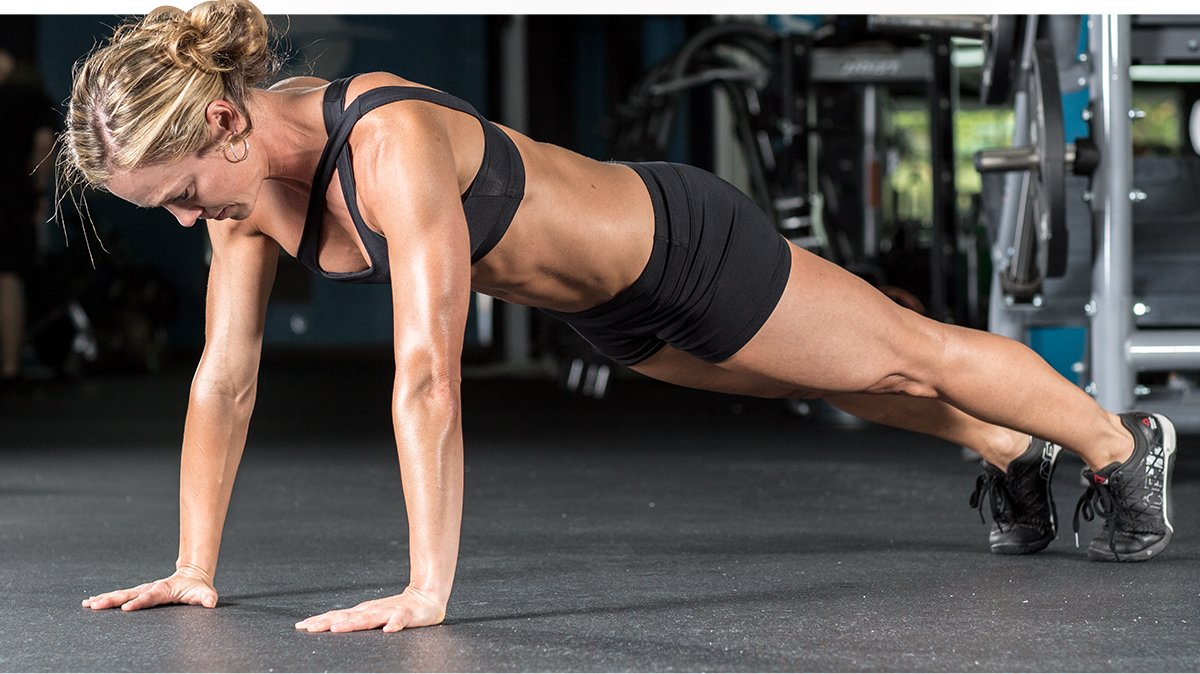Need a game plan to achieve that hot summer bod? Two expert athletes share their best tips to help you trim away the fat—and the excuses—from your body and your life!
The urge to lose a little fat can strike anyone at any time of year, but there's something about summer that makes the feeling just a bit more urgent. An event or trip shows up on the calendar, and all of a sudden, you're searching Google for that "one weird trick" that might make the difference between #abs or #tears showing up under your post.
We know how it goes! That's why we've asked Dymatize athletes Mike Hildebrandt and Alicia Ziegler to share which small changes make the most difference for them as they get ready to cut down. Nothing weird here! Just apply a couple of these techniques to your already solid nutrition and training plan, and give yourself a tiny leg up in the battle against bulk.
1. Recalibrate Your Calorie Tracking

Food logs and nutrition trackers are all the rage these days, but they don't work well unless your inputs are accurate. Far too often, people measure carefully for the first couple of weeks—or days—and then trust themselves to eyeball portions from then on. That may work during the winter, but if you have big goals this summer? No way.
"Everything that goes into your body needs to be tracked and accounted for if you want to lose that excess body fat this summer," says Hildebrandt. "Even if you feel OK about your tracking, take a week or so to track absolutely everything, making sure you account for all the food and beverages you consume."
It's not that we don't trust you. But nobody's perfect—and the little imperfections add up. If you're off by even a little, this could amount to 50-100 calories per serving, depending on the food. Do this a couple of times per day, and it can significantly affect your progress.
"This doesn't mean you need to eat boring, however," Hildebrandt notes. "Just eat honest." And remember, you're not married to the macros you first entered into your tracker. You can easily make adjustments in your MyFitnessPal account or whatever tracking method you happen to be using.
2. Start Your Day With A Sweat
When he's slimming down, Hildebrandt likes to start each day with 20 minutes of cardiovascular training at a moderate intensity. "Wake up, consume at least 5 grams of leucine or BCAAs, then get on that cardio machine and do 20 minutes—it's that simple," he says.
He notes that while doing so, you should keep your heart rate around 65-78 percent of your maximum heart rate, but no higher. "This pace should have you working at an intensity level where you can get out a short sentence, but aren't able to carry on a long conversation," he explains.
3. Don't Lose Gym Time To The Screen
This should go without saying, but given how many of us look at our phones without even realizing we're doing it, it bears repeating.

Drop and do 10 burpees whenever you catch yourself peeking at your phone.
"When in the gym, you shouldn't be ruminating over a playlist or distracting yourself by fiddling with your phone, checking emails, or replying to texts," Ziegler explains. "Maximize your efforts by making every minute count. Instead of checking the screen, do push-ups, burpees, jump rope, frog jumps, bench hops, knee-highs, mountain climbers, jumping jacks, or shadow boxing."
Want to make yourself painfully aware of your phone habit? Easy: Do 10 burpees every time you catch yourself looking at the screen in the gym—no exceptions. Tell your friends to keep you honest. Soon enough, you'll catch on.
4. Finish Your Lifting With HIIT
Leaving the gym with a relatively dry gym towel? We've got the solution.
Save the last 20 minutes of your workout for some high-intensity interval training (HIIT). If you have to cut back a little on the volume of your resistance work to make it fit, well, that's OK some of the time. Just make sure you at least get your big lifts in, and then throw yourself into the burn.
"Especially after strength training, HIIT can really help you capitalize on fat loss by tapping into stored body fat faster," Hildebrandt says. He recommends doing six 30-second sprints with 90 seconds of rest between those sets before hitting the showers. "Your HIIT cardio should be done in less than 20 minutes, including the warm-up and cool-down," he advises.
5. Feed Yourself And Your Gut-Bugs More Fiber
Fiber is a must for healthy digestion, but the transition to high-fiber foods may not yield the sexiest you right off the bat. The sooner you get through the initial uncomfortable phase, the sooner you can focus on achieving your summer physique.
"You might feel bloated and a bit gassy at first," admits Ziegler. "But in a week or two, your body will adapt, and you'll experience the appetite-suppressing benefits that these foods have."

Long after summer is done, eating a high-fiber diet may also help lower your cholesterol levels, improve your blood glucose control, and perhaps even lessen your chances of developing type-2 diabetes over the long term.
Also worth noting: Fiber is the food of choice of your healthy gut bacteria. Specifically, they prefer what is known as "prebiotic fiber." This can be found in foods like oats, asparagus, bananas, onions and leeks, and chicory. You can also boost the prebiotic content of starches like potatoes and rice simply by letting them cool before eating.
6. Get Serious About Carb Timing
If you want to get lean in a hurry, kick your trashy breakfast to the curb and start timing your carb intake around your training.
"Center your starchy carbohydrate intake as much as you can around your workouts," says Hildebrandt. "If you can get as much as 80 percent of your carbs before and after working out, great! When you really want to shred, it pays to start controlling the timing of your nutrients."
Carbohydrates eaten right before your workout session will be utilized quickly as a fuel source to support the workout. Those eaten after the session will be taken up rapidly to replenish muscle glycogen stores and prepare you for your next session.
7. Stop Being Lazy Outside The Gym
So you've hit the gym and finished a good workout. You're likely feeling pretty good about yourself. But don't let that have you thinking you get the rest of the day off!

Your workout doesn't have to be confined to the gym. Go outside and move your body!
"Just because your workout is finished doesn't mean you can become a couch potato for the rest of the day," explains Hildebrandt. "I recommend taking at least 10,000 steps per day outside of your workout to maximize the overall calorie burn."
I hear you: "But it's leg day!" Tough, kid. Park at the far end of the lot and start walking.
8. Remind Yourself Often Not To Reward Yourself Often
There's a certain trap that often comes with behavior change. For simplicity's sake, you could call it, "Yay! I finally remembered to drink water today, so I get double dessert!"
That's not going to work anymore. "Start setting weekly goals, and don't reward your accomplishment with food," recommends Ziegler. "Whether it's getting to bed earlier and logging sufficient sleep, or being able to do some extra sprints on the treadmill, set that goal and stick to it simply because it's the right thing to do."
She recommends writing a goal on your bathroom mirror, taping it to your fridge or car's dashboard, or making a screen shot of it and saving it as your screensaver so you are reminded of it daily.
"Once you accomplish that goal, reward yourself...with a new goal," she says. "By building confidence this way, you'll feel empowered to strive for more, and you won't set yourself back by eating junk food to reward that hard-earned goal."
The real reward, she promises, will come later, when you have a body that looks and feels great.
Không có nhận xét nào:
Đăng nhận xét